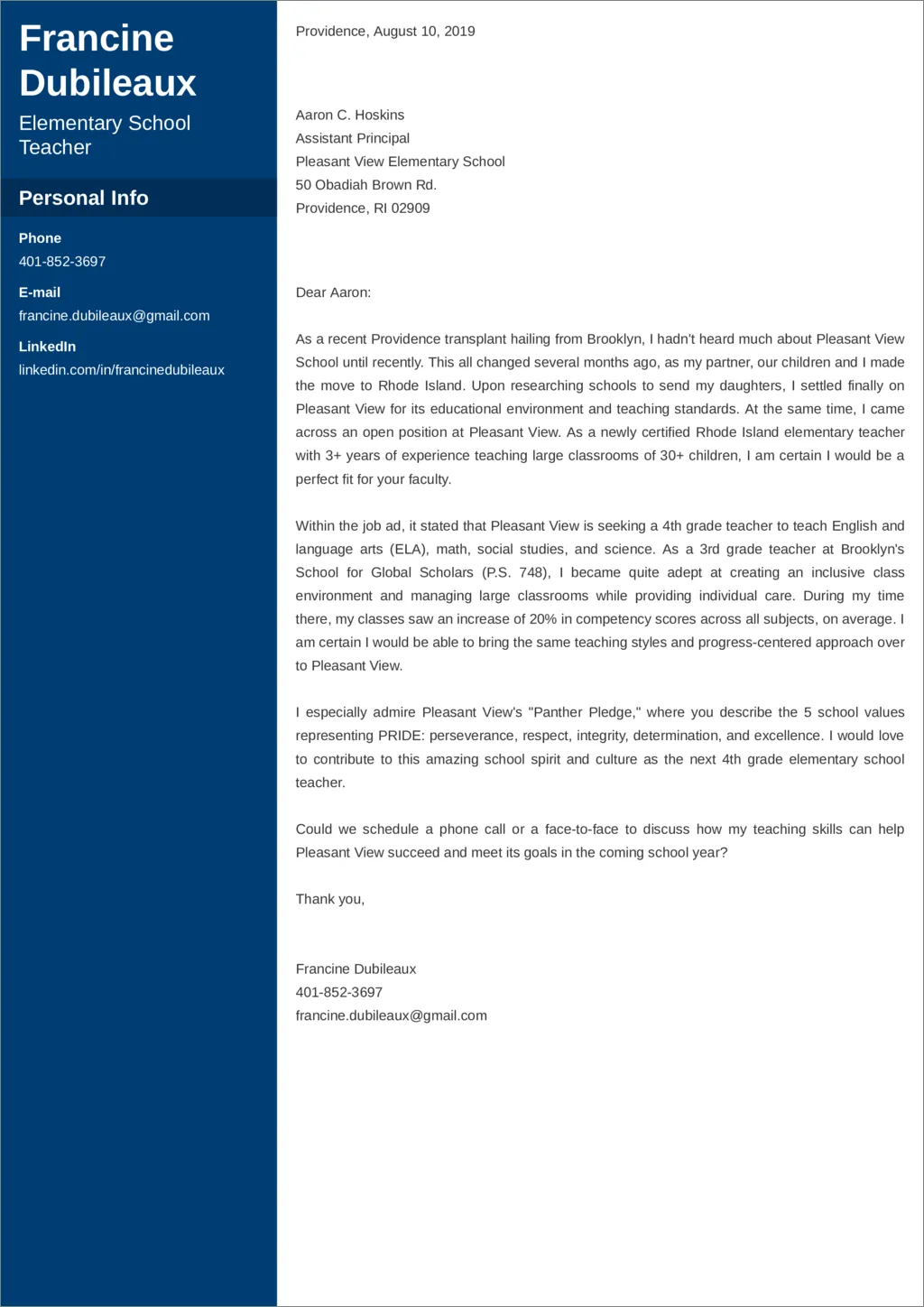Why a Teacher Cover Letter Matters
A well-crafted cover letter is a crucial element of a successful job application for teachers. It serves as your first introduction to a potential employer, allowing you to showcase your personality, passion for teaching, and unique qualifications. A compelling cover letter complements your resume by providing context, elaborating on your experiences, and demonstrating your suitability for the specific position. It’s an opportunity to make a strong first impression and convince the hiring committee that you are the ideal candidate for the teaching role. Therefore, investing time and effort in creating a tailored cover letter is an essential step in the job application process.
Key Elements of a Strong Teacher Cover Letter
Several key elements contribute to a strong and effective teacher cover letter. Start with a professional salutation, addressing the hiring manager or committee by name if possible. The opening paragraph should immediately grab the reader’s attention, expressing your enthusiasm for the position and the school. In the body of the letter, highlight your relevant skills, experience, and accomplishments, aligning them with the specific requirements of the job description. Provide specific examples of your teaching strategies, classroom management techniques, and ability to create a positive learning environment. Close with a strong concluding paragraph that reiterates your interest, expresses gratitude for their time, and includes a call to action, such as inviting them to review your resume or schedule an interview. Proofread the letter carefully for any grammatical errors or typos, and tailor it to each specific job application.
Showcasing Your Teaching Skills
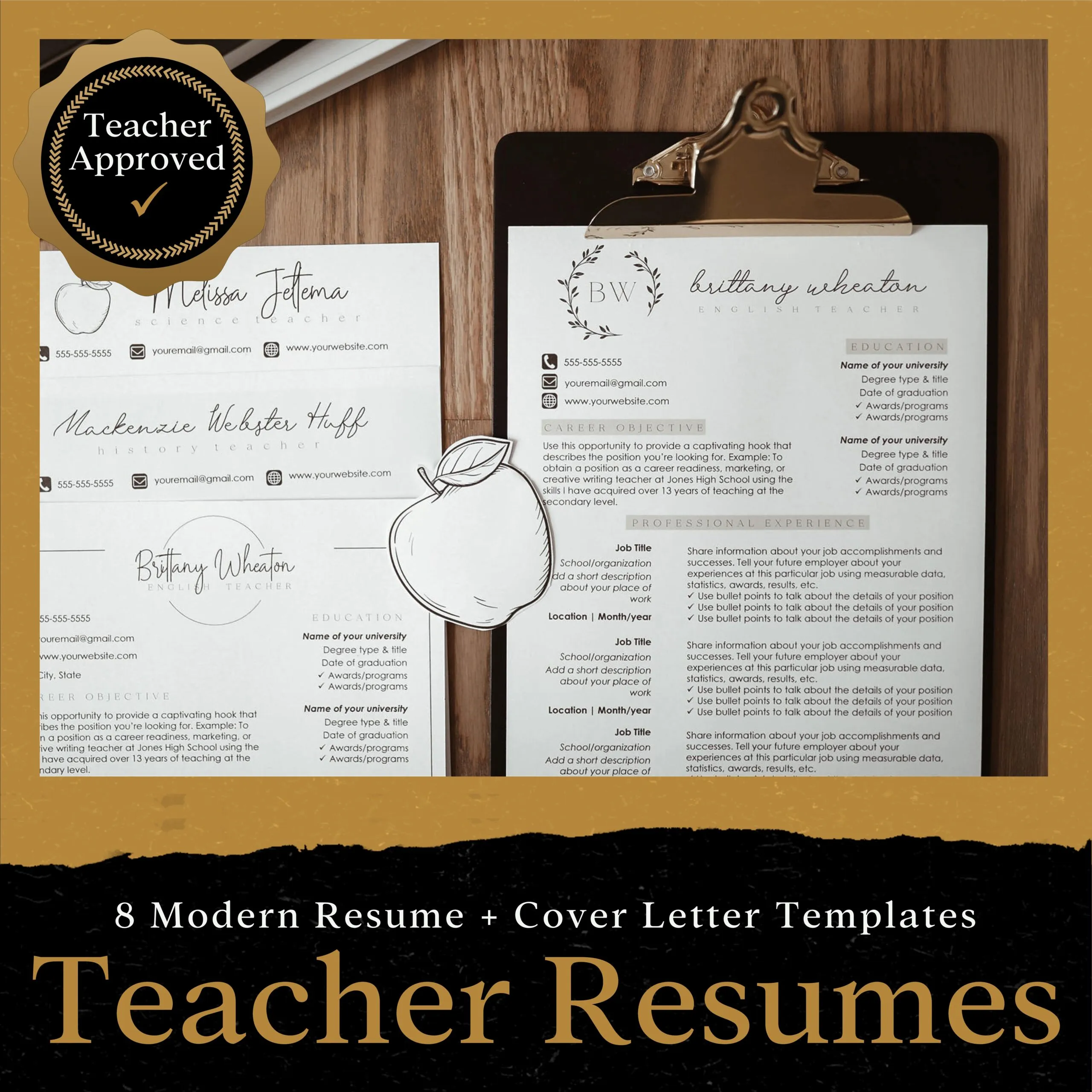
Your cover letter is the perfect place to showcase your teaching skills, demonstrating how you create a positive and effective learning environment. Discuss your ability to differentiate instruction, catering to diverse student needs and learning styles. Highlight your classroom management strategies, emphasizing how you maintain order, foster a respectful atmosphere, and encourage student engagement. Describe your experience using various teaching methods, such as project-based learning, collaborative activities, or technology integration, to enhance student understanding and retention. Provide examples of how you assess student progress, provide feedback, and adjust your teaching methods accordingly. By emphasizing your skills and providing concrete examples, you can demonstrate your ability to make a significant impact on student learning.
Highlighting Relevant Experience
In your teacher cover letter, be sure to highlight your relevant experience, aligning it with the specific requirements of the job. Mention previous teaching positions, internships, or volunteer experiences, detailing the grade levels and subjects you taught. Describe your responsibilities, accomplishments, and the impact you made on student learning. If you have experience with specific curricula or educational technologies, be sure to mention them. Quantify your achievements whenever possible, such as the number of students you taught, the percentage of students who improved their test scores, or the successful implementation of a new program. Tailor your experience to the specific needs of the school and position, emphasizing the skills and knowledge most relevant to their requirements.
Quantifying Achievements in Your Cover Letter
One of the most effective ways to make your cover letter stand out is to quantify your achievements, providing concrete evidence of your impact as a teacher. Instead of simply stating that you improved student test scores, specify the percentage increase or the number of students who reached proficiency. Rather than saying you implemented a new reading program, mention the program’s specific outcomes, such as a measurable improvement in reading comprehension or fluency. If you have experience with parent communication, detail the number of parent-teacher conferences you conducted or the positive feedback you received from parents. By using numbers, statistics, and measurable results, you can demonstrate the value you brought to previous teaching positions and create a more compelling and persuasive cover letter.
Teacher Cover Letter Example 1 Elementary School Teacher
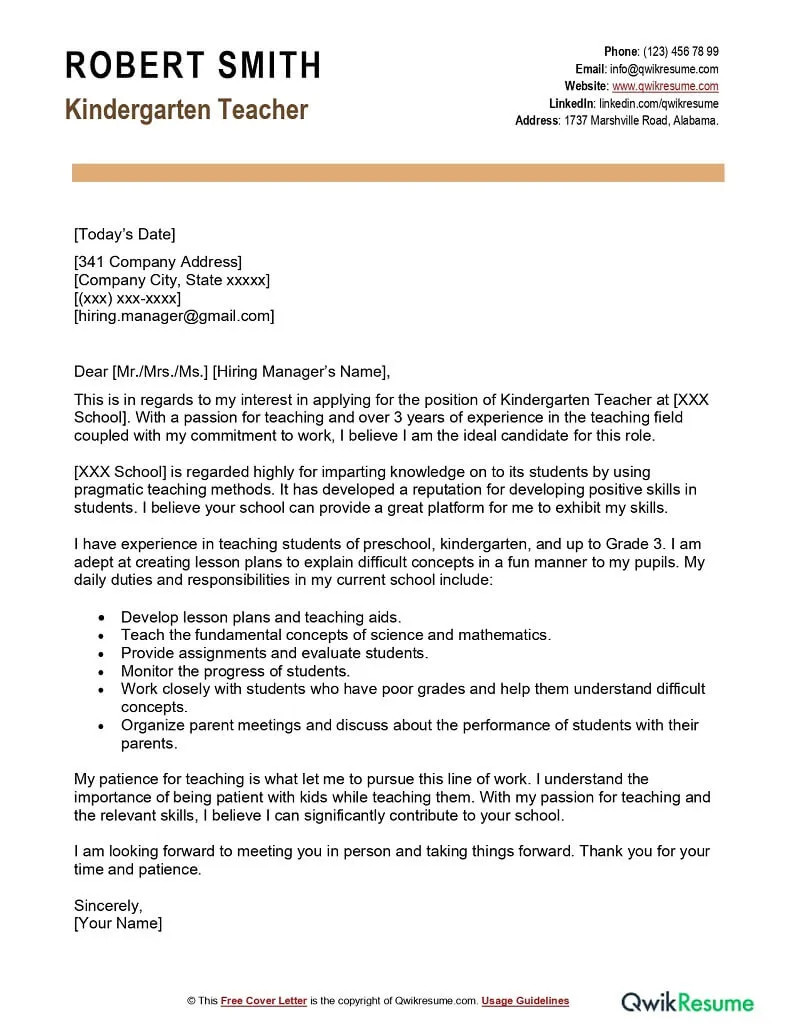
This is a basic template of a cover letter example for elementary school teachers. Always address the hiring manager by name (if possible) and show enthusiasm in your first paragraph for the school and role. Use action verbs to show skills such as ‘implemented’, ‘created’, ‘fostered’, and ‘collaborated’. Highlight your achievements, use numbers to quantify your achievements, and conclude with a call to action. Proofread before sending!
Teacher Cover Letter Example 2 High School Teacher
For high school teachers, the focus is often on subject-matter expertise and preparing students for college or career. The cover letter should show proficiency in a specific area, detail methods of teaching, and mention any specific programs used. If you have experience in extracurricular activities, mention them. High school teacher cover letters should demonstrate knowledge of curriculum development and differentiation for varied learning styles. End the letter by reiterating enthusiasm and thanking the reader for their time.
Teacher Cover Letter Example 3 Special Education Teacher
Special education teachers should highlight their experience working with students with diverse needs. Mention specific training or certifications, like experience with IEPs. Demonstrating empathy, patience, and a commitment to inclusion is essential. The letter must detail experience with various learning disabilities and strategies for creating an inclusive classroom. Express your passion for special education and your dedication to student success. The end of the letter should show your gratitude.
Teacher Cover Letter Example 4 Substitute Teacher
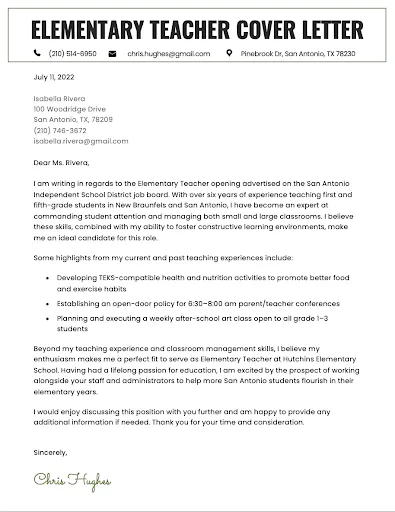
Substitute teacher cover letters should highlight flexibility, adaptability, and classroom management skills. Mention experience with different grade levels or subject areas. Describe your ability to quickly build rapport with students and maintain a positive learning environment. Stress your reliability, punctuality, and professionalism. The letter should be concise and focused, emphasizing your availability and willingness to fill in as needed. The conclusion should be straightforward, expressing availability and thank the reader for their time.
Teacher Cover Letter Example 5 Preschool Teacher
Preschool teachers should emphasize their ability to create a nurturing, stimulating, and playful learning environment. Highlight experience with early childhood development principles and curriculum. Describe your skills in planning age-appropriate activities, fostering social-emotional development, and communicating with parents. Express your passion for early childhood education and your dedication to helping young children learn and grow. Always end by expressing gratitude for the opportunity.
Tips for Customizing Your Cover Letter
Customizing your cover letter for each job application is crucial for demonstrating your genuine interest in the specific position and school. Research the school’s mission, values, and programs to understand their unique needs and priorities. Tailor your letter to highlight the skills and experiences most relevant to the job description. Use keywords from the job posting throughout your letter to demonstrate that you meet their requirements. Mention specific details about the school or district, such as their innovative programs or commitment to diversity, and explain how your qualifications align with their goals. Proofread your customized letter carefully to ensure that it is free of any errors and accurately reflects your qualifications and enthusiasm.
Proofreading and Formatting Your Cover Letter
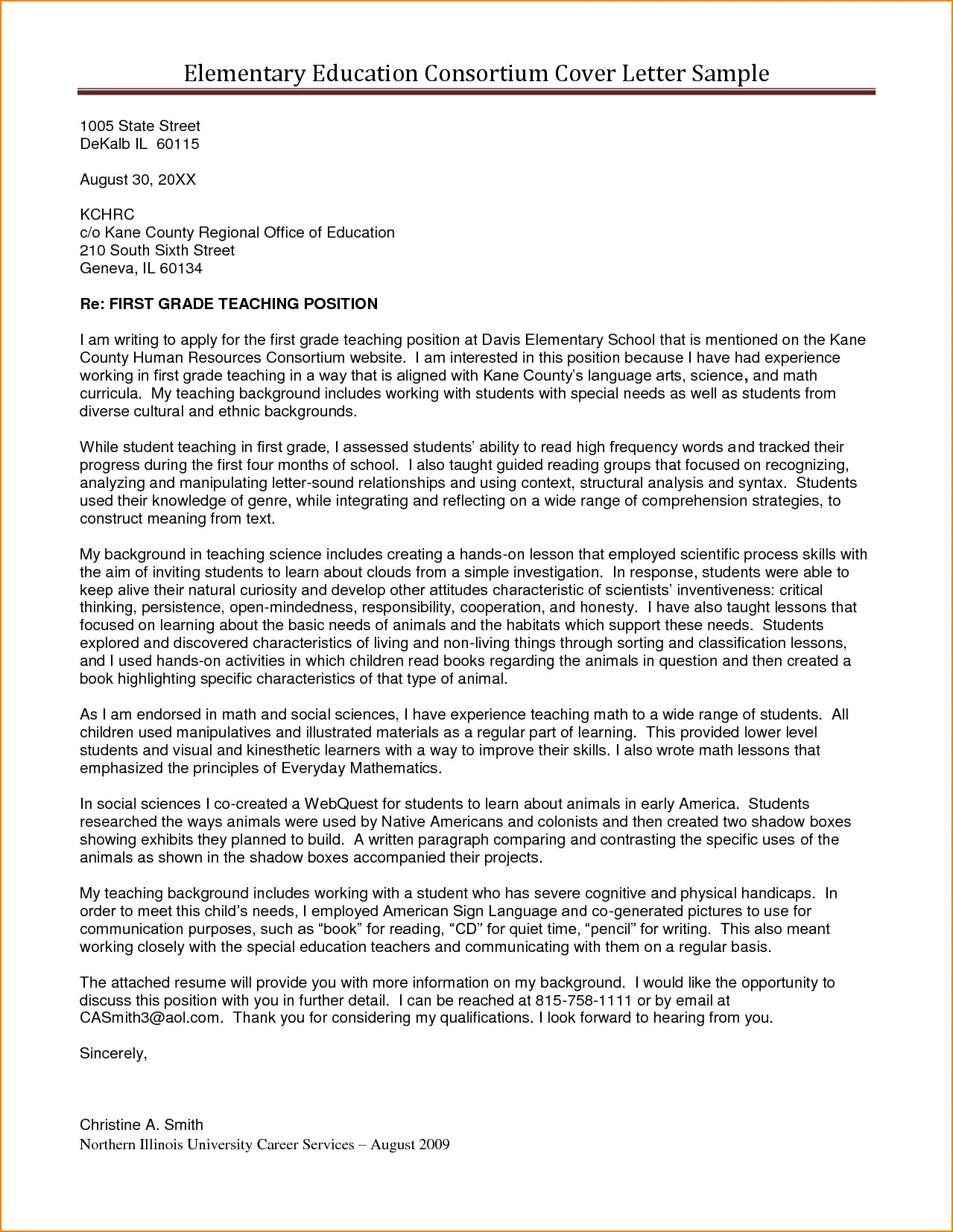
Proofreading and formatting are essential steps in the cover letter writing process. Before submitting your letter, carefully proofread it for any grammatical errors, spelling mistakes, and typos. Ensure your sentences are clear, concise, and easy to read. Pay attention to the formatting of your letter, using a professional font, appropriate margins, and clear paragraph spacing. Use a consistent and logical structure, with each paragraph focusing on a specific point. Ask a friend or colleague to review your cover letter for any errors you may have missed. A well-proofread and formatted cover letter demonstrates your attention to detail and professionalism, increasing your chances of making a positive impression on the hiring committee. A great cover letter, with a well-formatted resume, will greatly improve your chances of getting hired!
